Posted by Founder, Bicycling Monterey
The Beauty of Clotheslines
-
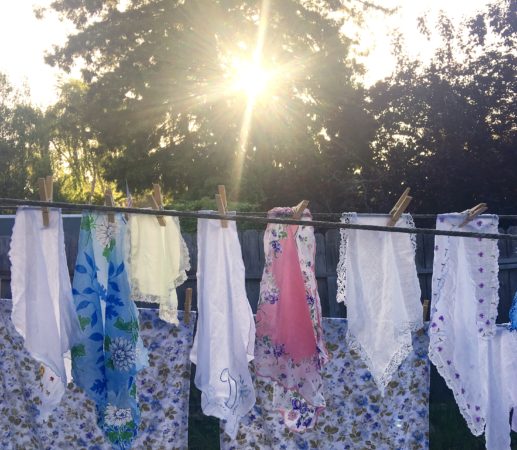 Above and below: Mother Nature applying the #1 rated fabric freshener: fresh air.
Above and below: Mother Nature applying the #1 rated fabric freshener: fresh air.
This brand of fabric freshener has the added benefit of no plastic container–reducing the risk of more plastic leaving Monterey Bay homes and landing in the Pacific Gyre.
“Maybe using 10% less energy in your home doesn’t seem like much, but four less nuclear power plants is.”–Matthew Sleeth, MD
Matthew Sleeth makes sense. Japan’s nuclear power plant disasters gave many people pause; and in reflecting about nuclear power, Dr. Sleeth emphasized energy efficiency. He laughed, “Maybe we need ads showing beautiful babes and bulked-up guys hanging clothes on the line!”
You don’t see ads like that these days. But you used to. The bikini-clad tobacco model at the end of this post might help get people pausing to think about hanging clothes out. Maybe it’s time to bring those 70s ads back.
This is no laughing matter to Sleeth. The former ER doc and chief of staff of a large New England hospital hangs out his own laundry–or hangs it indoors in inclement weather.
Poverty or pleasure?
At a spring 2009 Imagination Coast breakfast at Haute Enchilada in Moss Landing, I was surprised by the resistance of two environmental consultants when I mentioned clotheslines. Clearly drying clothes on the line remains an unpopular practice for much of U.S. society, even some people dedicated to other earth-friendly practices.
Clotheslines seem to be associated with poverty rather than ecology–or pleasure! For me, hanging up and taking down clothes from the line is my favorite domestic task. Taking a break to hang laundry while I listen to the birds singing is a great pleasure in the middle of a workday. And pulling a T-shirt over my head in the morning or resting my head on a fresh pillowcase at night, and getting another whiff of that fresh air in the process, is momentary bliss. Towels not only smell good, a “crunchy” towel feels skin-sational!
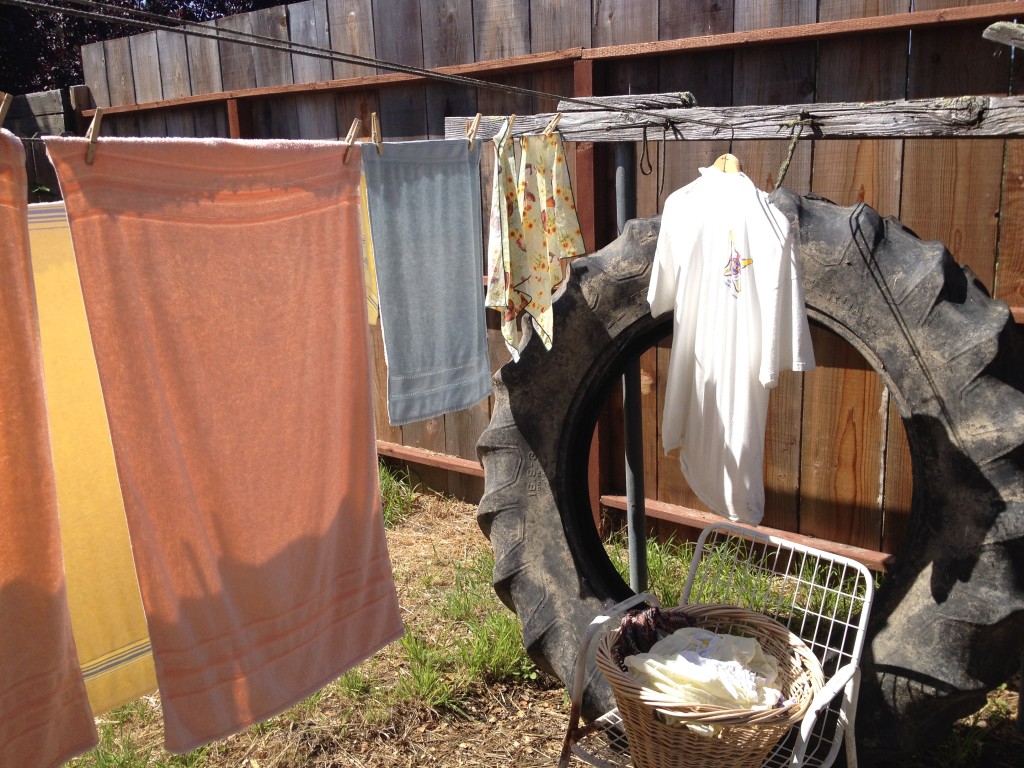
Update, 2024—clothesline tip: After about forty years of flawless year-round use, our old clothesline (photo above) finally weakened and broke in one place. We initially had a hard time finding a good replacement, after first trying some plastic cord picked up at a yard sale. That plastic was a horrible option; every time we walked under the clothesline, it pulled out our hair (as a visiting friend also experienced!). Worse yet, it also shed plastic fragments onto the ground. So in 2024 we checked in with Tom Delaney of Breezecatchers in Dublin, Ireland, who had discovered this 2009 post and commented on it in 2023. Breezecatchers now distributes from Michigan (https://breezecatcher-clothesline.com/pages/about-breezecatcher-clotheslines), and Tom suggested we might be happy with “para cord,” which is a good diameter for clothesline use. Tom told us the para cord he had available is tough with a flexible outer braided nylon cover and a poly inner cord. Our verdict? After a month of using the para cord for clothesline (photo immediately below), we’re happy with it. Yay!
What about wrinkles?
That’s no reason not to use a clothesline. For fussy items, use your dryer to shake wrinkles out—this only takes a couple minutes—before hanging these items to dry on the line.
And weather?
In the rainy season, I make use of an indoor wooden drying rack and other clothes-hanging spots, allowing me to still “line dry” many clothes indoors. For the remainder, I go ahead and use my dryer. If I had a larger house, I’d string a clothesline indoors and line dry all the laundry on rainy days too—just as author Matthew Sleeth does, regardless of who is coming over (see below). Hmmm…but if Matthew can do it (he and his family are now living in a house the size of their former garage), maybe I can stretch myself to go a step further next winter.
When I visited my son’s duty station in Gaeta, Italy, in virtually every neighborhood—in all economic brackets—colorful clothing decorated the cityscape as it fluttered in the seaside breeze to dry. The same was true in the surrounding countryside—the beautiful landscape included colorful clothes on lines amidst the olive groves. I also noted an Italian approach to drying clothes in rainy weather: plastic sheets spread across clotheslines.
What about the neighbors?
Seeing lingerie hanging freely in Gaeta made me smile, remembering Australian pediatrician Helen Mary Caldicott (a past president of Physicians for Social Responsibility) and American physician J. Matthew Sleeth (BlessedEarth.org). Speaking at the Monterey Conference Center, Caldicott urged, “You Carmel ladies: Stop worrying that your neighbors might see your panties on the line!” And Sleeth, at First Presbyterian Church of Monterey, said he’d been momentarily embarrassed when businessmen arrived at his home one rainy afternoon to see his boxers hanging across the living room. When he considered that he had once been unembarrassed by his formerly heavily polluting lifestyle, he decided his boxers were far less an embarrassment.
Curious how I met Matthew Sleeth?
Click here, then scroll down to “the late Dot Prowell.”
Doing right by the Earth when you can’t use a clothesline…
If you aren’t able to line dry your clothes, but still want to do the best you can for the Earth, using one of the new super-efficient gas dryers—rather than an electric dryer—is usually the best option. An exception would be if your electricity comes from a renewable source, such as being generated at a solar-powered facility.
For those in a community with a coal-powered electric plant, drying clothes uses five pounds of coal per dryer load. In the US, coal accounts for over 30 percent of carbon dioxide emissions.
The Monterey Bay’s power plant in Moss Landing, operated by Dynegy, does not burn coal, but neither is that electricity generated by the sun or wind. To make electricity at Moss Landing, it requires a complex process that includes the burning of natural gas. (Check out the Moss Landing power plant link to get a basic idea of how electricity is produced there. You will also see the clear logic about why a gas dryer is usually a better option than an electric one—simple energy efficiency.) And when that natural gas is converted to electricity, and that electricity finally reaches the electric clothes dryer, what then? Electric clothes dryers use energy at a rate of 5,000 watts. That’s five kilowatt-hours for the average one-hour load.
Clearly the use of a solar- and wind-powered clothes dryer, AKA drying clothes on an outdoor line, is not just an old-fashioned practice to be abandoned. For those who are able, it can be another small yet effective way to reduce your household’s carbon footprint today.
Besides, it’s a pleasure. And slowing down to play along the way, as my daughter did this day, adds to the fun.
 What’s up with the t-shirts?
What’s up with the t-shirts?
A clothespin bag doesn’t need to be a work of art. I make them from old t-shirts, hastily sewn to clothes hangers. My latest are made from a Navy t-shirt I purchased at my son’s first duty station, and from the t-shirt my daughter wore in her California Junior Lifeguards program. Love those kids! And the bags add sweet remembrances to every laundry day.
If you have a plastic hanger around already, fine. But don’t buy one! A wooden hanger is sturdier, and it’s better for the earth (as Monterey Bay Aquarium and others remind—scroll Bike to the Beach to learn more).
Wondering why two bags? Taking pins off the line when you take laundry down keeps pins–and clothes–cleaner. I keep the newest pins in one bag to hang light-colored clothes, and older pins in the other, for dark colors. No clothespin stains!
Prefer to buy a clothespin bag? Clothespin aprons and bags come in a variety of styles. Ask at local housewares shops. Below is a photo of a clothespin apron given to us by friends who purchased it in New Zealand, where they visited to do medical work in the back country for many years. Sometimes we tie it around our waist, other times we just tie in on the clothesline and slide it along as we hang or take down laundry.
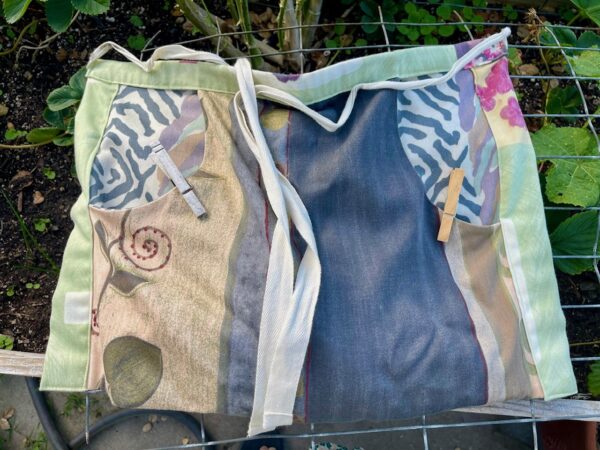
* * * * *
Blasts from the past
To show how clotheslines were a common sight in the United States just decades ago, check these out.
The first is a postcard sent 9 Sept 1944 by my dad—then 18 and in the U.S. Marine Corps—to his father. Notice that the shirt pocket says “USMC”–clearly the artists designed this for the marines’ use.
That bottle to the left of the washer is labeled “clorox,” and I’m certainly not suggesting you use chlorine bleach. As Greenpeace and others note, chlorine bleach will someday be looked back on in the same way that most people now look at products like DDT–“Why did we use that!”
An aside: When my daughter was a baby, a friend and I tested the non-chlorine bleaches to see what took out laundry stains best. Today there are so many more non-chlorine choices that are effective as well as earth-friendly.
Ads we need to bring back?
Here’s an ad from the back cover of Time, 25 August 1975. I’d saved it because my baby brother’s rooster led off “Mood of the Nation” that issue.
The ad includes a product I’m not recommending–cigarettes. It does, however, highlight that using a solar clothes dryer was much more common in the United States just 35 years ago. Thank goodness the wisdom of line drying is being realized again. Talk about energy efficiency–hard to beat a wind- and solar-powered clothes dryer. And for the price of some clothesline and a bag of wooden pins, you can’t beat it for cost either.
Maybe time to bring these 1975 ads back–minus the cigarette.
This post originally published June 29, 2009.
This post was published on 17 March 2011. One or more changes last made to this post on 11 October 2024.

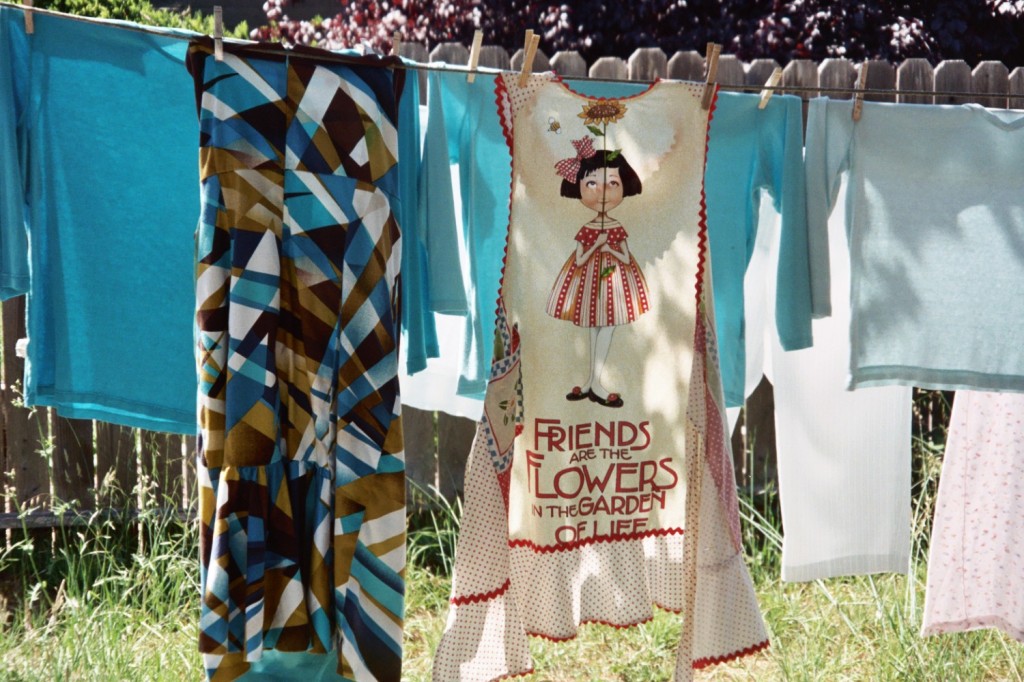
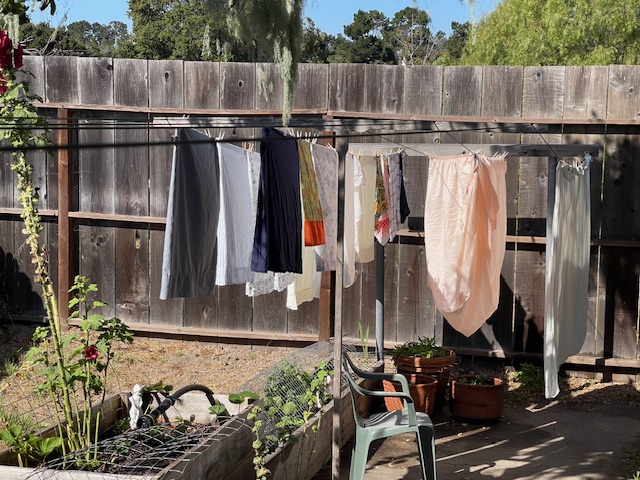
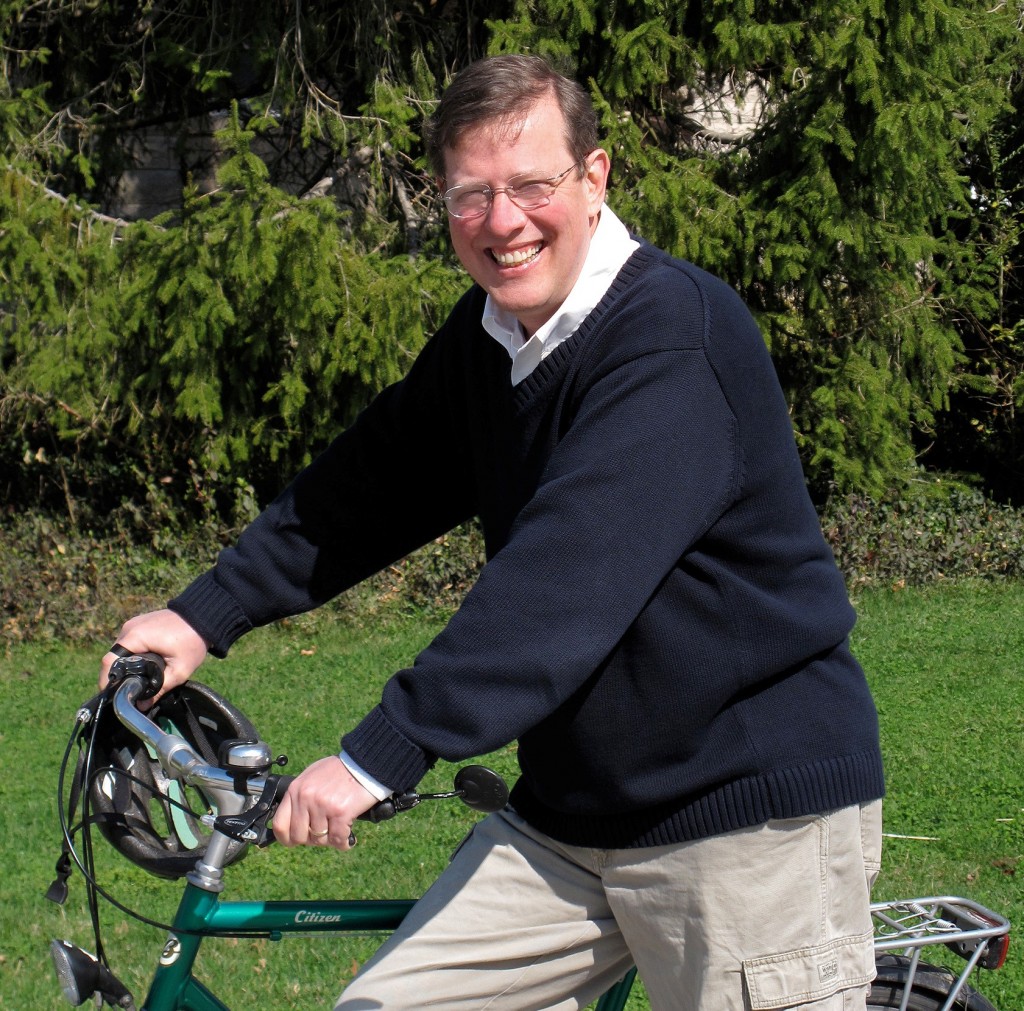
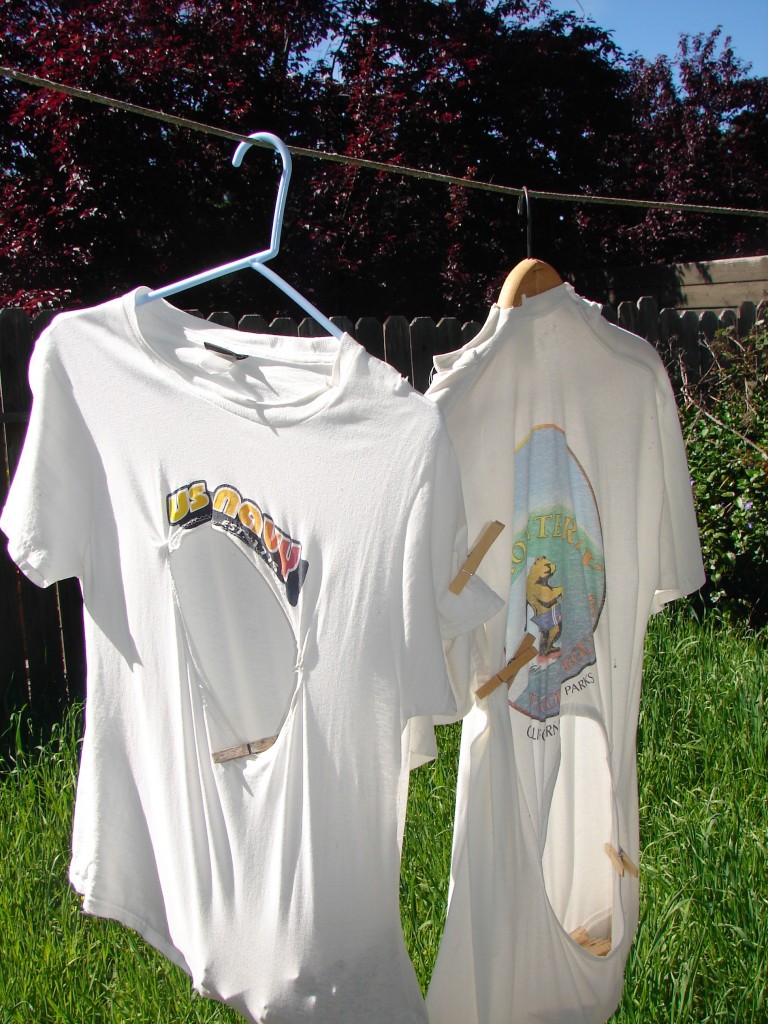
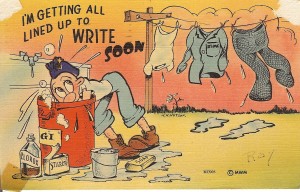
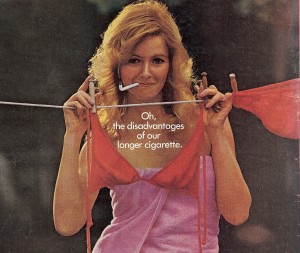

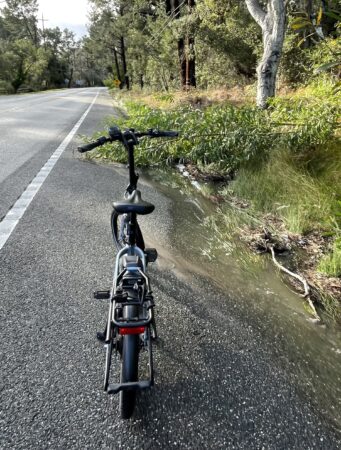




Hi
I don’t want to be taking advantage of this fine article to place a back-link to my clothesline business Breezecatcher Clotheslines without consent. We have been supplying clotheslines direct to customers in the US for the past 25 years and pride ourselves on the quality of our products. We would very much appreciate a link from your article to our website https://breezecatcher-clothesline.com/ . It would help to convert more households to outdoor laundry drying.
Best regards
Tom
In South Africa, we had a clothesline with a view of the ocean. The laundry room had a Red Door. I could just stand out there half the day, and then come in and have a cup of tea and read a book,
and live happily ever after…
One English friend of my beau’s said that you don’t hang your dainties on the line ! ! ! She had a fit when she saw his underwear out there. For the dainties, there is to be a Drying Rack in the garage.